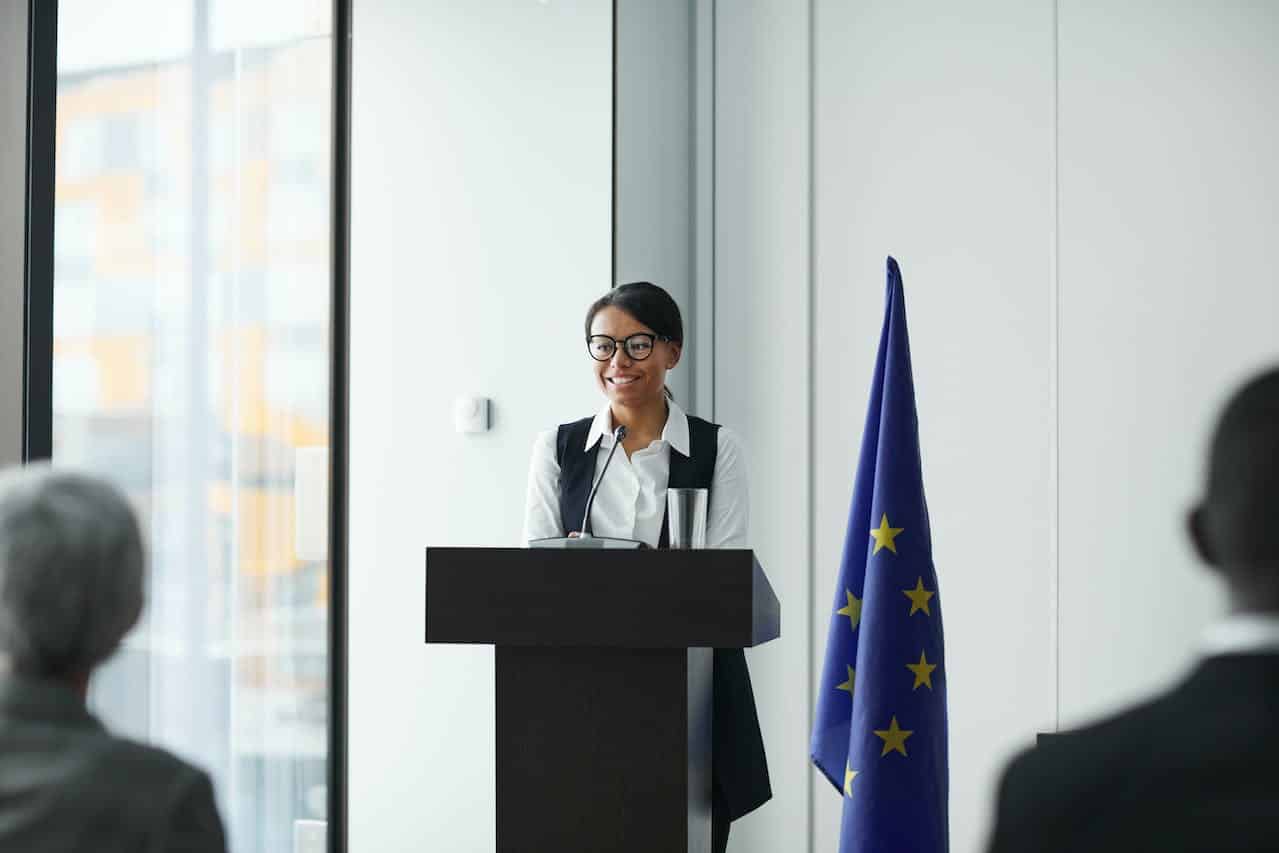
How & When Companies and Organisations can Engage With the EU Co-Decision Process
We’ve spoken to many companies who don’t understand why their EU engagements aren’t getting the results they want. It seems like they’re doing everything right: when the EU publishes new proposals, they take part in consultations, and when the policy moves to the approval stage, they make their views known.
Their mistake? They’re being reactive, rather than proactive. It’s not enough to wait until the EU invites industry feedback. For real impact, companies need to anticipate upcoming policy and know exactly who to build relationships with – and when to start.
When introducing new clients to the complex and often overwhelming world of EU decision-making, one of the most frequent questions we get is “When?” Organisations who want influence in Brussels need to know when each institution makes key policy decisions and when is the best time to get involved.
In this post, we’ll break down the steps in the main EU legislative procedure, the so-called “co-decision procedure”, so that companies better understand the different stages policy goes through before it’s approved. By connecting with the right people at the right time, stakeholders can impact sustainability policy and benefit both industry and society.
Co-decision refers to the procedure whereby both the Council and Parliament must approve EU laws – they are co-legislators. But the process begins much earlier. We’ll guide you through each step, from the ideas and drafting stages to the final votes to pass legislation. FYI, co-decision is also known as “ordinary legislative procedure” so you might see that term used in EU communications.
Want someone with deep experience and connections in the EU to help guide your sustainability strategy? Get in touch!
The key institutions
First, it’s important to get to grips with the EU’s main decision-making bodies – our article on how the EU works will help. The key players in the co-decision process are:
- The European Commission: the EU’s primary executive institution who draft and propose laws. The Commission is politically independent – that is, it represents the interests of the EU as a whole, rather than any specific nation or party.
- The Council: which consists of 27 ministers, one from each member state, who represent the interests of their countries. The ministers assess proposals and pass legislation in conjunction with the Parliament.
- The European Parliament: a group of 705 elected representatives who act as the voice of their constituents. Several political parties are represented in the Parliament, and there are various committees and subgroups. A major role of the Parliament is to approve legislation.
Working with the Commission
Staying at the pulse of EU policy
The Commission proposes all new initiatives and laws. The vast majority of new legislation is defined by the Commission in the first stage before the documents reach the Council or Parliament.
With this in mind, it’s enormously important that companies get involved as early as possible – and that may mean before the Commission has fully decided on the details of their approach. Even prior to the Commission publishing their first policy plans, companies should be proactive and stay aware of upcoming agenda topics. This will allow them to prepare their positions and gameplan well in advance, and make their presence known before the field gets crowded with opinions and interests later on.
That means building as many contacts as possible to keep on the pulse of what’s happening. Since the European Council defines the EU’s general strategy, it’s also a good idea to pay attention to their discussions and to EU news more generally to get a sense of what to expect.
Roadmaps and impact assessments
Before making a formal proposal, the Commission openly publishes a roadmap or inception impact assessment and asks for feedback during a formalised time period known as a Consultation.
Roadmaps describe the general aims of a new policy and the problems it hopes to tackle, as well as outlining the policy options currently on the table. Inception Impact Assessments give more in-depth information on the advantages and disadvantages of the proposed policy, but they are only used for proposals that could have a really major impact on the economy, environment, industry, or society.
This high-level Consultation period normally lasts for four weeks. To get a seat at the negotiating table, businesses should be well informed on the topic of the proposed legislation and should have established their position and strategy. It’s crucial to make your voice heard during this first stage when the policy direction is most open to change.
Consultations and workshops
Based on this high-level feedback, the Commission puts together more information on their proposal and opens a second Consultation phase. This period is longer, usually lasting twelve weeks, and gives an opportunity for more detailed scrutiny of the proposed policy. Interested stakeholders fill out a comprehensive questionnaire on the proposal, and it’s possible – and advisable – to upload position papers, data, and other documents to communicate your ideas to the Commission.
For a more in-depth view into how this process plays out, take a look at our analysis of the EU Sustainable Textiles roadmap – the second Consultation phase is currently live.
There are also other channels for getting your voice heard by the Commission. There are several meetings, seminars, and targeted consultations you can participate in. You can also give input via stakeholder workshops, which are more formalised, and an excellent chance to hear what other stakeholders are saying.
Connecting with Council and Parliament
Once the Commission has drafted and officially published a legislative proposal, the Council and the Parliament examine the draft simultaneously. This is known as a “reading”.
Council, Coreper and attachés
The proposed policy is assessed at several different levels within the Council, usually first by working groups and by the Permanent Representatives Committee (Coreper). Often, the Council tries to reach internal agreement on the proposal before they begin discussions with Parliament – this is known as a “general position”. This often speeds up the process and decreases the number of readings and back-and-forths between the Council and Parliament.
It’s often tricky for companies to know exactly who to build relationships with within the Council. One route is to create bonds with representatives from the member state(s) your organisation is based in. There are also sustainable development attachés responsible for environmental policy within the national Permanent Representations to the Council, and it’s wise to seek one-on-ones with them.
What’s really important, though, is having a general presence, and ensuring the Council is aware of you and your interests.
Don’t wait until after your engagements with the Commission have ended to connect with either representatives of the Council or the Parliament – they need to know who you are and see that you’ve been involved from the start. If you try to engage with Council or Parliament negotiations too late, it’s unlikely that you’ll be effective.
The Parliament: Rapporteurs and committees
During the first reading, the Parliament studies the Commission’s proposal. They also examine the Council’s general position. If Parliament approves the proposal and the Council’s position, the act is passed via co-decision. If not, usually they go back to the drawing board and Council begins a second reading.
It’s important to engage early with MEPs (Member of the European Parliament), especially those associated with parties or member states relevant to your organisation and its sustainability goals.
It’s also key to identify who’s leading the discussion within Parliament. The Parliament has special committees dedicated to particular topics, and one member of the committee responsible for a new policy proposal is designated the “rapporteur”. The rapporteur takes the lead on the co-decision process from the Parliament’s side, consulting with experts and specialists and heading up discussions within the committee, as well as negotiations with the Council. Since rapporteurs are usually associated with a political party, other parties often appoint shadow rapporteurs who also participate in the process.
Companies need to build strong, meaningful relationships with rapporteurs and shadow rapporteurs from the very beginning. You really need a seat at the table, with the committee, to have your voice heard when they draft amendments. Once the amendments have passed from the committees and rapporteurs to the vote in the Parliament’s plenary seating, it’s much harder to make an impact.
The final stages
At the second reading, Council and Parliament may reach an agreement, which means the policy is adopted with their joint amendments. If they don’t agree, a complex process called trialogue begins, in which a Conciliation Committee enters negotiations. This is quite rare, though – Council and Parliament usually work together to find a solution by the first or second reading.
Getting from the Commission’s initial ideas to Council and Parliament’s adoption of policy can be a lengthy process. From start to finish, it often takes a couple of years.
Key takeaways
In conclusion, the key to successful engagement is getting in early – and staying in. Organisations need to think ahead of the processes and build relationships with the Commission, Council, and Parliament at the first policy stages. With a proactive approach and a strong EU network, it’s possible to make a meaningful impact on the EU’s decisions.
Here are some other articles that you might find helpful:
- 4 Ways a Public Affairs Consultant Can Help Your Business
- How to Align Your Departments for Your Sustainability Strategy
- CASE STUDY: How A Dutch Foundation Built a Due Diligence Action Plan In Preparation for the EU’s Upcoming Legislation
- How to Collaborate With Stakeholders in the Policymaking Process
- What Does it Mean to Engage With EU Policymakers?
- Demystifying the European Commission: Regular People are Influential (Resources + Guide)
Want someone with deep experience and connections in the EU to help guide your sustainability strategy? Get in touch!
Join our newsletter to keep up to date with the latest news and information coming out of the EU.




